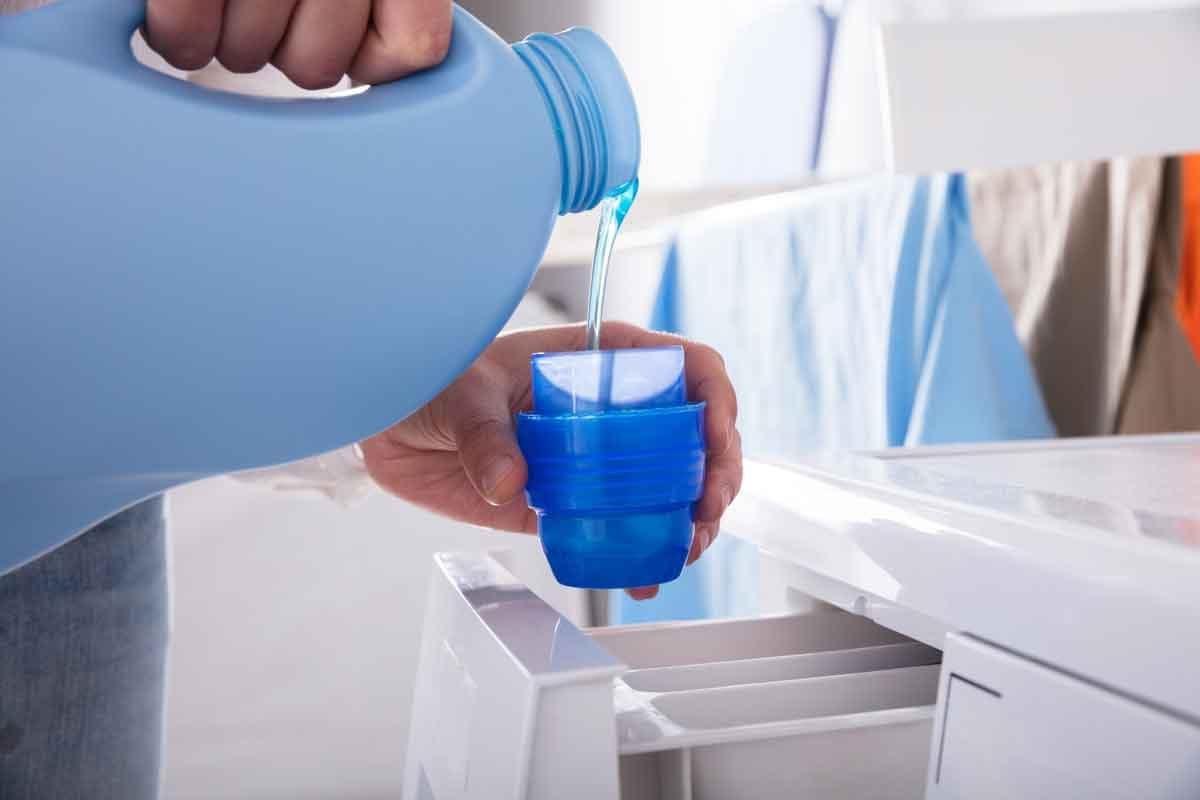Even when laundry is filthy, smelly and stained, more detergent isn't better. If there are suds after the rinse cycle, your clothes aren't getting clean.

How to Tell If You’re Using Too Much Laundry Detergent

On This Page
Are You Using Too Much Laundry Detergent?
We live in an age where more is often better — more food, more drink, more clothes, more money and so on. Even with the simplest things in life, like washing your clothes, it’s natural to conclude that more is better. But you can make a lot of mistakes with your laundry, including overloading on detergent. Knowing how much laundry detergent to use can save your laundry, your washing machine and your wallet.
While it seems logical that more suds in the machine would mean squeaky clean garb, it’s actually quite the opposite, according to laundry experts like Mary Gagliardi, a.k.a. Dr. Laundry, a scientist at The Clorox Company.
Too Much Detergent Can Create More Problems
Using too much laundry detergent can be problematic. Among the issues: Residue or stains on clothes; washing machine odors from trapped excess residue; loads not draining properly; increased wear and tear on the washer’s pump and motor; and more energy expended to wash clothes, since the machine automatically adds extra rinses and pauses to break down excess suds.
Clean laundry already has a lot of bacteria, but detergent overload seems to only make things worse.
How To Know How Much Laundry Detergent To Use
How can you avoid overdoing it? According to Gagliardi, you must first understand the three factors that determine cleaning performance in the laundry:
- Thermal energy (water temperature);
- Mechanical energy (agitation);
- Chemical energy (provided by the detergent and the laundry additives).
“When optimized, these factors work together to provide great cleaning,” Gagliardi says.
“You optimize temperature by choosing the hottest water you can because the hotter the water, the better the cleaning. You optimize mechanical energy by increasing the agitation (heavy duty versus delicate cycles), by increasing the agitation time, and by adding an extra rinse. You optimize chemical energy by making sure you use the right amount of a good detergent, and add the appropriate laundry additive for the load being washed.”
Your Detergent’s Ingredients
Understanding what detergent ingredients do in the wash is also enlightening. Gagliardi says a good laundry detergent starts with builders, surfactants and anti-redeposition agents. These work together to soften the water so the cleaning agents can remove the soil and suspend it in the wash water. It also keeps the soil from depositing back onto the clothes.
Detergent should also have enzymes that break up protein stains, making it easier for cleaning agents to remove them. Fluorescent whitening agents are also important; they deposit onto fabrics to capture light from the non-visible part of the spectrum and reflect it in the visible part of the spectrum. Laundry additives (sodium hypochlorite and color-safe bleaches) improve performance over what you’d get with detergent alone.
Type of Washing Machine
Then there’s the type of washing machine you’re using, which determines how much detergent to add. High-efficiency (HE) washing machines use less water, energy and detergent than traditional washers.
“If you have a HE washer, you need to use a HE detergent (and laundry additives that include instructions for use in HE washers),” says Gagliardi. “These products are specially formulated for low water wash conditions, and include surfactants that won’t cause too many suds in the washer.”
Oversudsing cushions the load as it tumbles, which just reduces mechanical action and lowers cleaning performance. “Using a smaller amount of a standard non-HE detergent to try to limit foaming is actually not a good fix for this,” she says. “It also reduces the necessary ingredients needed for cleaning, which may not be evident after one cycle but becomes more apparent over time.”
How Much Laundry Detergent To Use
So how do you know how much detergent to add? Check the instructions on the detergent bottle or box, which typically tells you the minimum amount for an average-sized load with average soil washed in water with lower water hardness levels.
Once you know your baseline amount, you can add more if you have a larger load or more heavily-soiled laundry.
Are detergent companies telling you to use too much detergent? Perhaps. If you follow the directions on the packaging and still find huge amounts of suds in the wash cycle, it might be too much.
“In this situation, re-check the package instructions and make sure the lowest level of detergent recommended (usually ‘line 1’ on a cap or scoop) is clearly marked so it’s easy to measure the correct amount,” says Gagliardi. “And please do measure — pouring detergent directly from the bottle into the washer without measuring is a great way to make sure you use the wrong amount, either too much or too little!”



















